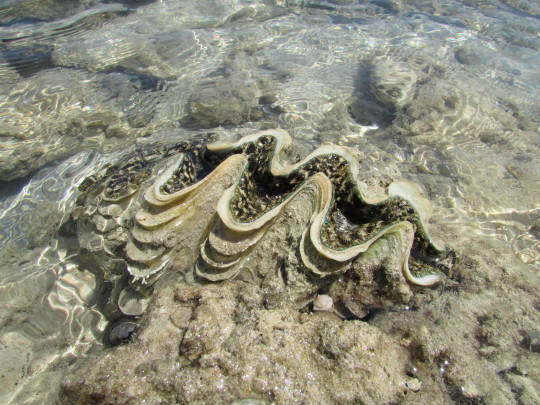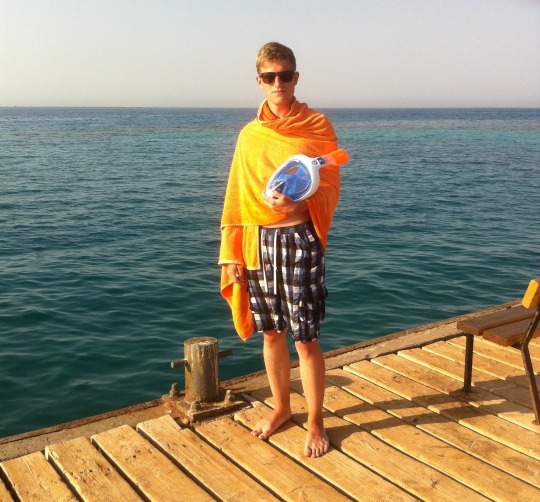Observation of the Week, 9/23/17

Our Observation of the Week is this Small giant clam, seen in Egypt by @wernerdegier!
Currently an intern at the Naturalis Biodiversity Center in Leiden, the Netherlands, Werner de Gier is already on his second project there, revising and figuring “a lot of species of the genus Ptychotrema, a group of African cannibal snails. I used a CT-scanner to examine the internal shell structures and tried to solve the complex taxonomy of these species.” This is already after describing two new species of caridean shrimp in Indonesia, “which were associated with colourful tunicates,” so he’s been busy.
And it was on a vacatoin to Hurghada, Egypt, that Werner (below, “showing my snorkeling mask and sense of holiday-fashion”) found the Small giant clam (Tridacna maxima). After exploring the tidal pools near his resort, Werner says
When I almost decided to head back to the beach, I saw a weird brownish blob a few meters ahead. It was a huge Tridacna maxima, which I had never seen of that size and more importantly, had never seen being above the water at low tide. The living shell was partly contracted, but open enough for me to take some pictures. Armed with my second hand camera and being aware of the waves coming in, I took some overview shots of the shell. When I decided to turn around, I felt a splash of water hitting my back. Apparently I placed my feet to close to the shell, triggering the shell to shoot some water out while closing a bit.
While it is a large bivalve, Tridacna maxima gets its common name from the fact that is the smallest of the giant clams, the average specimen being not much more than 20 cm in length. By contrast, the largest attain a length of 120 cm! Like other bivalves, Tridacna maxima is a filter feeder, siphoning in seawater and digest planktonic organisms. However, it derives much of its nutrients from a symbiotic relationship with algae, who create food through photosynthesis. This is one reason they are found in shallower waters than other giant clams. This exposure to the sun is believed the reason for the incredible colors of its mantle - crystalline pigments possibly give them protection from solar rays. The beauty and small size of Tridacna maxima, alas, makes it a target for the aquarium trade. In fact, try and find a video on YouTube

“Thanks to a friend of mine (@franzanth) I got into iNaturalist and I have to say I’m even a bit addicted to it,” says Werner. “I really like the format of experts identifying tricky species and love the diversity of the species being submitted...I have recommended this community to a few friends of mine and since we’ll be traveling the world as biologists in a few months, I think this is the perfect way to see what’s everybody been up to.”
- by Tony Iwane
- Not only is Werner a published biologist, he’s also creates some great scientific illustrations!
- You can check him out on Twitter as well.
- Interesting article about the importance of giant clams in the reef ecosystem.





Comentários
Thanks for featuring me here @tiwane!
Adicionar um Comentário